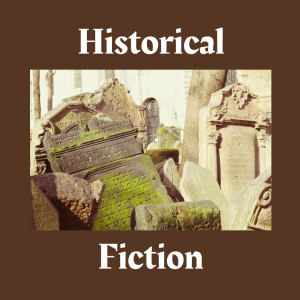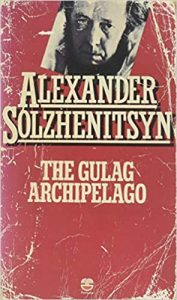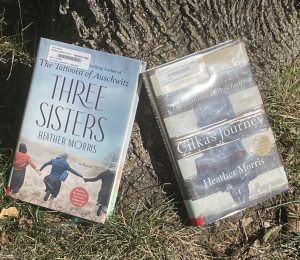 A good title is short and memorable. As such, titles of literary works can’t be copyrighted. For generations, Three Sisters referred to a play by Russian author and playwright Anton Chekhov. who intended to show (and not tell!) the hopes and dreams of three sisters. Growing up in the big city, Olga, Masha, and Irina long for going back, back to happiness, as they sorely miss the sophistication and glamour of city life in their miserable, provincial existence crippled with desperation. However, their aspirations turn into resignation and toleration of their situation, adding a masterpiece to the classic literary trope of three siblings, seemingly alike, but utterly different.
A good title is short and memorable. As such, titles of literary works can’t be copyrighted. For generations, Three Sisters referred to a play by Russian author and playwright Anton Chekhov. who intended to show (and not tell!) the hopes and dreams of three sisters. Growing up in the big city, Olga, Masha, and Irina long for going back, back to happiness, as they sorely miss the sophistication and glamour of city life in their miserable, provincial existence crippled with desperation. However, their aspirations turn into resignation and toleration of their situation, adding a masterpiece to the classic literary trope of three siblings, seemingly alike, but utterly different.
A book of historical fiction published by New Zealand novelist Heather Morris tells the story of different three sisters from another time, the Holocaust. The story of three Slovakian sisters: Magda, Livia, and Cibi, starts in more desperate times, during the Nazi occupation of East Europe in the middle of the 20th century, with the concentration camp Birkenau (a few miles from Auschwitz, Oświęcim in Polish) as its backdrop. These vulnerable but strong young women support one another through hard labor, starvation, and sickness, eventually managing to escape the final annihilation: the destruction of the camp before the liberators arrive.
The trauma that united them for life is lasting and not to be forgotten. Their story continues as they settle down in Israel, get on with their lives, marry, and have children and grandchildren, just like everyone else in the world. But can they? Even with their resilience and all the love surrounding them, can they really move on? How can anyone surviving severe trauma go on living like everyone else around them? What keeps them alive? What makes them get up every morning?
The reader will be pressed to contemplate and reflect on some ultimate questions of life while reading this book or listening to the powerful narration in the audiobook version. The topic also takes us to the controversy of picturing the Holocaust in books and movies, i.e., whether it’s authentic, adequate, and appropriate, a perennial question for generations to come.
I remember the 1993 movie, Schindler’s List, directed by Steven Spielberg, receiving opposing criticism from audiences and critics alike for depicting certain scenes, choosing characters, stereotyping, symbolism, music, cinematography, you name it. In my native Hungary the consensus was that Spielberg speaks the language of American audiences, and this movie was an effective way to reach them.
Similarities exist in another Holocaust-themed feature film, the Italian comedy-drama, Life is Beautiful, where a father helps his little boy survive in his own way. Not only does he hide him from the guards and death within the concentration camp, but he sets the scene as an elaborate game to score points to win a prize, a tank, which eventually arrives as liberators reach the camp. Controversial? Indubitably.
Circling back to the Heather Morris novel, Three Sisters is actually the third in the series starting with The Tattooist of Auschwitz. Originally meant as a screenplay, the novel was accused of depicting an inauthentic description of the camp. Based on her conversations with the protagonist, Slovakian-Jewish Auschwitz survivor Lale Sokolov, the author tracked down further details to present the triumph of humankind over evil in this love story set during the darkest era of history. For all the controversy it raised, The Tattooist of Auschwitz became a New York Times bestseller. Published in January 2018, it had been translated into 17 languages by November of the same year, and into 47 by September 2019.
The second in the series, Cilka’s Journey, builds upon one character’s perspective from the previous novel. Sixteen-year-old Cilka does what she has to do to survive the concentration camp only to be charged and sentenced as a collaborator for “sleeping with the enemy” and sent to a Siberian prison camp, or gulag in the Soviet Union, similar to Solzhenitsyn’s The Gulag Archipelago. This book had a greater impact on me than the other two, whether the camps were depicted accurately or not.
I can relate to Cilka’s Journey on many levels. In the 1970s, anytime we drove near a concentration camp site on our way to a family vacation destination, my parents made a point of taking detours. I visited Auschwitz, Birkenau, Teresienstadt, Dachau, and Buchenwald as a teen. One never forgets the ”Arbeit Macht Frei” (English: Work sets you free) sign entering Auschwitz, and the way the word “Macht” curves in a slightly steeper angle on the “arch of triumph” over the gate. Still, it hits unexpectedly hard from time to time, for example, when first walking under the ”Reno, The Biggest Little City in The World” arch.
Facing trauma in history affects us in its own way. Visiting the location, walking around in the camp, and checking out the gas chambers all leave an impact. For me at that time, the young girl who recently had found out about her severe myopia, aka near-sightedness, the worst was the pile of eyeglasses in a floor-to-ceiling glass case. Not the mountain of artificial limbs next to it but the wireframe glasses that seemed to almost spill over, crush the glass wall, and bury the visitors shocked by the displays. It was not movie time – there was no popcorn or refreshments – it was a museum where everyone found an object that spoke to them. These days technology allows for virtual tours. I need to collect more courage to visit those.
 Growing up in communist Hungary, as a child I had never heard of the gulags, the communist equivalent of the Nazi concentration camps. Once Solzhenitsyn’s The Gulag Archipelago and One Day in the Life of Ivan Denisovich became available in Samizdat editions, i.e., as forbidden, underground publications, I was shocked and appalled, kept in the dark along with my peers. Samizdat books were printed on low-quality paper somewhere in West Europe and smuggled to Hungary in mysterious ways. The translation might have been a team work of good-willing amateurs, but it didn’t matter at that time.
Growing up in communist Hungary, as a child I had never heard of the gulags, the communist equivalent of the Nazi concentration camps. Once Solzhenitsyn’s The Gulag Archipelago and One Day in the Life of Ivan Denisovich became available in Samizdat editions, i.e., as forbidden, underground publications, I was shocked and appalled, kept in the dark along with my peers. Samizdat books were printed on low-quality paper somewhere in West Europe and smuggled to Hungary in mysterious ways. The translation might have been a team work of good-willing amateurs, but it didn’t matter at that time.
What mattered was that we knew and that it couldn’t be covered up anymore. More books followed, such as Kolyma Tales by Varlam Salamov about Soviet lagers or most recently, Kitelepítés (English: Displacement) the autobiographical story about the deportation of Transsylvanian-Hungarian author András Visky’s family from the Hungarian-speaking territories of Romania to a Romanian camp. The topic returns in the texts written by our recent guest author Julie Otsuka in the world of the Japanese internment camp in the United States. One of them was not that far from us geographically here in New Jersey, see Seabrook Farms. Similar but incomparable, all these books add to the volume of literature on displacing, humiliating, and exterminating peoples in history.
The three books by Heather Morris matter today because they speak about the unspeakable, raise awareness, and start a conversation. You never know when you find your own glasses, but you don’t want to remain shortsighted.
Author’s note: Written in October 2022 (!), this post doesn’t cover the tv-series, recent events, or opinions about the series.
The Series
Morris, H. (2018). The Tattooist of Auschwitz. Harper Paperbacks.
Morris, H. (2019). Cilka’s Journey. First U.S. edition. New York: St. Martin’s Press.
Morris, H. (2021). Three Sisters. First edition. New York: St. Martin’s Press.
